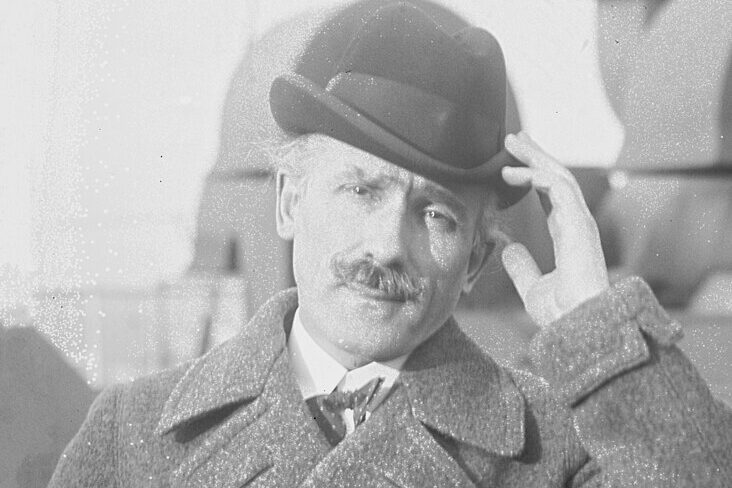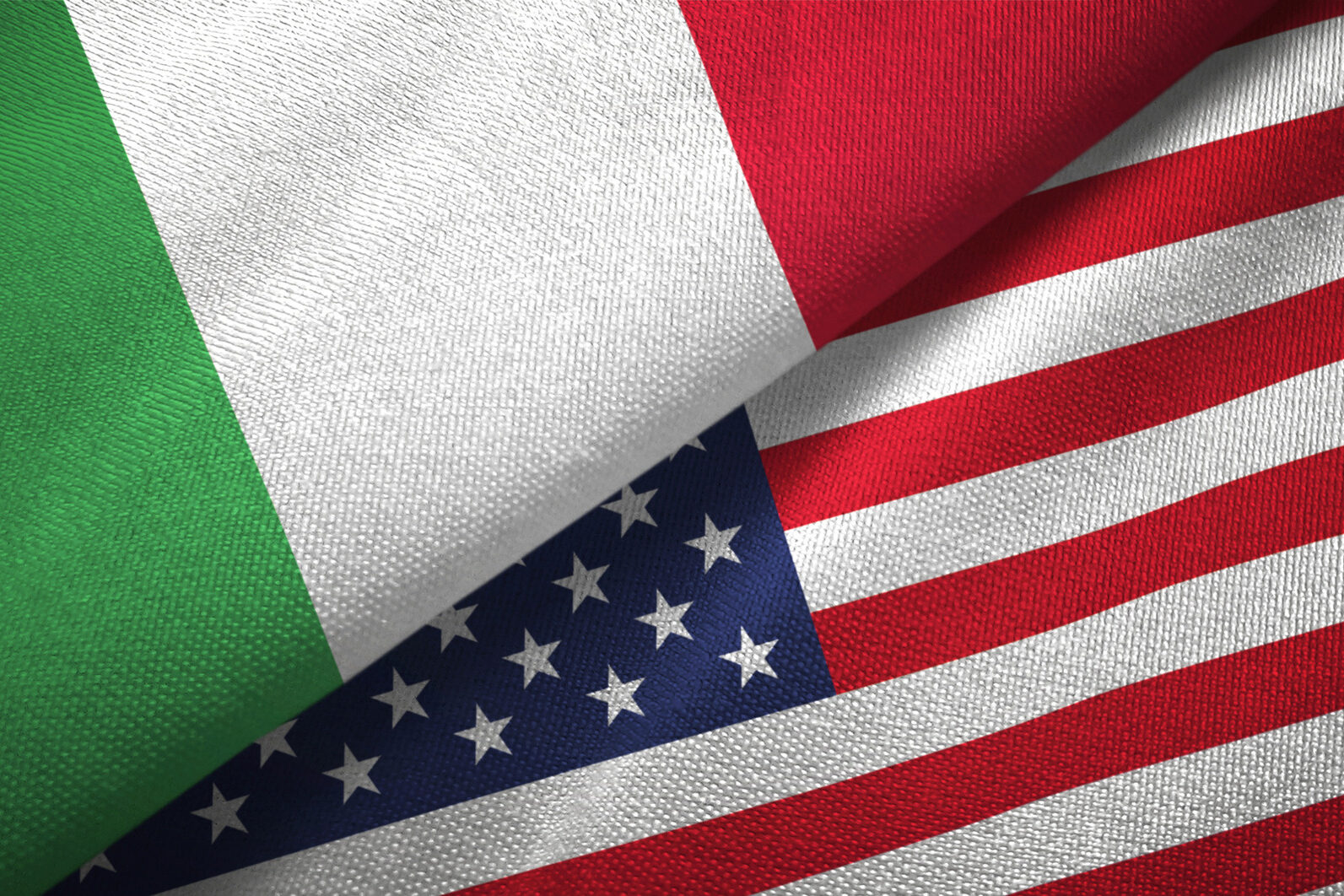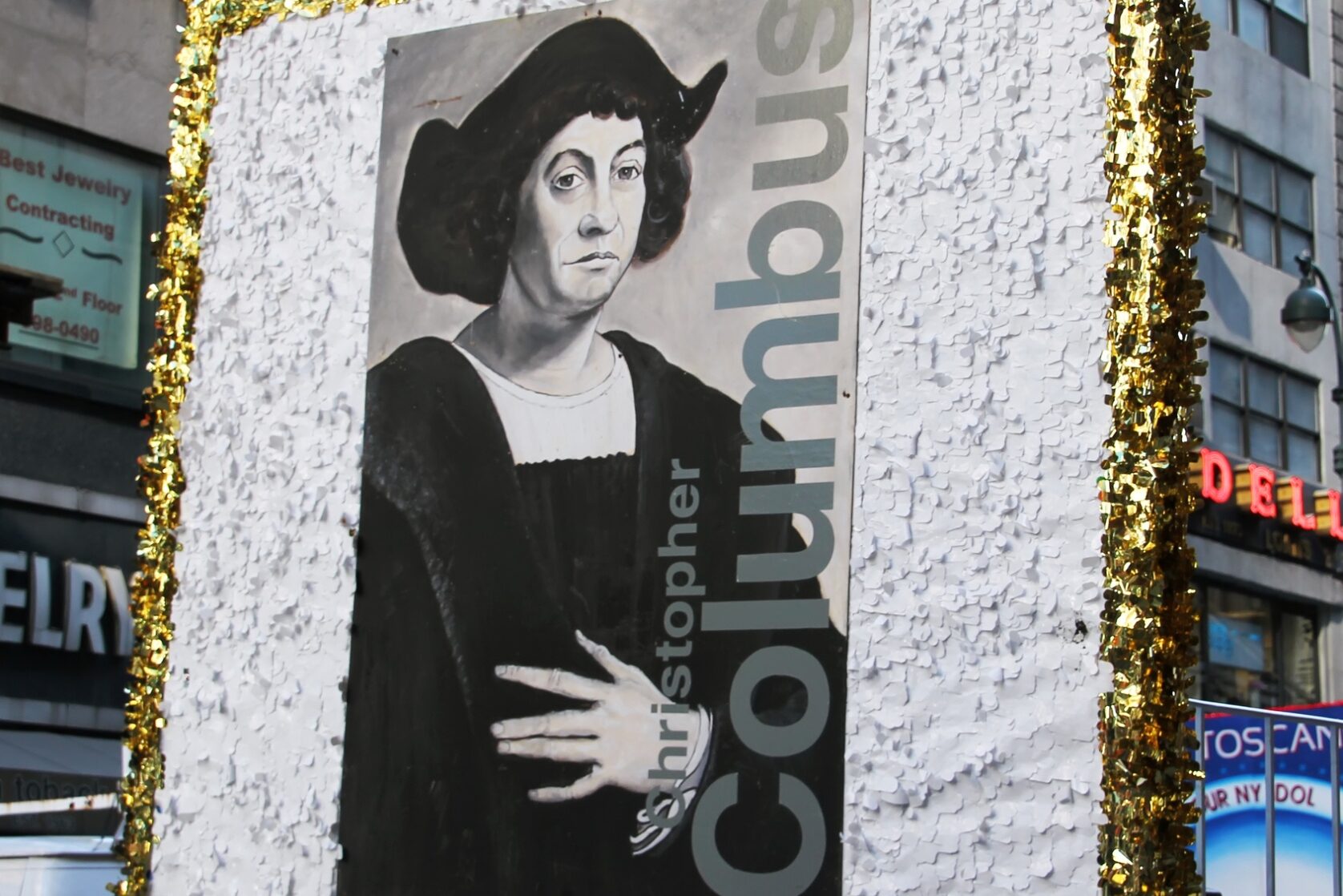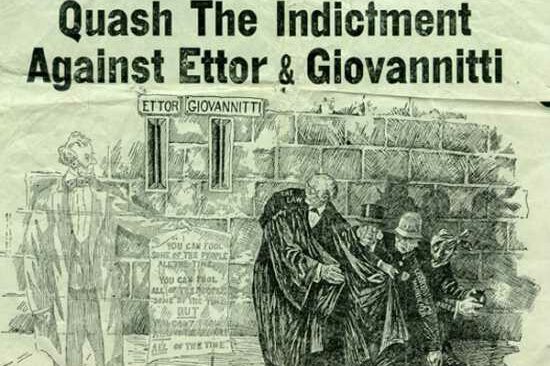Dear Readers,
More January jottings with an Italian connection.
Thomas Jefferson (1801-1809) our third President, had repeatedly expressed his displeasure at the low caliber of the US Marine Band. And so, in 1805, John Hall, a Marine Corps captain, was sent to Catania, Sicily, to recruit a group of musicians who would help improve the musical standards of the celebrations taking place at the presidential home, later the White House. Captain Hall, Jefferson’s musical emissary, hired Gaetano Carusi, a local Catania orchestra leader, and convinced him to convince his 17 musicians to move to America. Six of the 17 musicians were boys, between the ages of 9 and 12; each was followed by most of their family and was given $50 and loads of promises, including fame and wealth.
They sailed to America aboard the Navy’s frigate, Chesapeake. The ship went straight to Tripoli harbor, Libya, first, to take part in war actions, to the discomfort of the musicians. The US had been paying protection money to the Pasha after attacks on US merchant shipping. The musicians’ arrival in America wasn’t auspicious: the city of Washington was in reality a quite deserted community, with two or three taverns and some shacks, according to orchestra leader Carusi in letters he wrote to Italy. What’s more, there was the unhealthy sight of pigs roaming freely in the streets!
The new musicians were mobilized into the Marines, and they were forced to do all kinds of unpleasant duties, including the unglamorous KP, plus they had to pay for their own instruments. Some in the group quit and went back to Sicily.
Venerando Pulizzi, who was 12 when he arrived, continued in the military, in the Marines, for 22 years. He even became the band leader, a position he held for nine years. Five other Italians eventually became US Marine bandleaders, starting a great Italian tradition that is just another example of how Italy’s contributions have enriched life in the USA.
**
The Museo Italo-Americano was established in 1978 by a small group of Italians and Italian-Americans who shared a common vision. On January 29th, 1978, Giuliana Nardelli Haight, Richard Figone, Edward Galletti, and Robert Yohannan signed and filed the required legal documents and the Museo Italo-Americano became a registered California non-profit corporation. Unlike other Bay Area Italian organizations, whose 45aims were primarily social, the mission of the Museo was to increase through art exhibitions, cultural and educational programs, a greater public recognition, respect, and understanding of the rich contributions Italians and Italian-Americans made to the art, culture and history, the very quality of life of the United States.
Initially located in a room over the Malvina Café on Washington Square in North Beach, in 1981 the museum moved to larger premises in the Fugazi Building on Green Street. Under the leadership of Modesto Lanzone, the museum relocated, in 1985, to a 5,000 sq. ft. space on Fort Mason, an area that was being developed as a center for the arts. This move meant that the museum could expand and diversify its programs and offer exhibitions in a true gallery atmosphere.
**
Arturo Toscanini died on January 16, 1957, in New York City, New York. He was born on May 25, 1867 in Parma, Italy. Arturo Toscanini was the youngest child and only son of a poor Italian tailor. Having demonstrated obvious musical talent, he became a pupil, at age 9, at the Parma Conservatory, where he studied cello and piano. He began his musical career in 1885 as a cellist with a traveling opera troupe. In Rio de Janeiro in 1886, while on a South American tour with the company, he had his first experience as a conductor. He later became the artistic director of La Scala in Milan, the most important opera house in Italy. There, he inaugurated a new epoch by including German, French, and Russian operas in the repertoire. In 1908, he traveled to the United States and astonished the audience at the Metropolitan Opera by conducting Richard Wagner’s Gotterdammerung entirely from memory.
Toscanini left the Metropolitan in 1915 and returned to Italy where, during World War I, he conducted mainly concerts for the wounded. He made a tour of the United States in 1920, giving 124 symphony concerts with the La Scala Orchestra. Toscanini remained at La Scala for eight years until 1929, when he was appointed conductor of the New York Philharmonic Oscatra. A staunch Democrat, Toscanini refused to conduct the Italian fascist anthem in 1922 and again in 1931. He conducted the Bayreuth Festival in 1930 and 1931 but refused to appear in Germany after the rise of Hitler, as a protest against the treatment of Jewish musicians.
From 1937 to 1954, Toscanini directed the National Broadcasting Company Symphony Orchestra, which NBC formed especially for him.
In 1989, he was honored by the US Postal Service on a 25-pence performing arts stamp.
Cari lettori,
Altri appunti di gennaio con una “Italian connection”.
Thomas Jefferson (1801-1809), il nostro terzo presidente, aveva ripetutamente espresso il suo disappunto per il basso calibro della banda dei Marines statunitensi. E così, nel 1805, John Hall, un capitano del Corpo dei Marines, fu inviato a Catania, in Sicilia, per reclutare un gruppo di musicisti che aiutassero a migliorare gli standard musicali delle celebrazioni che si svolgevano nella casa presidenziale, poi Casa Bianca. Il Capitano Hall, l’emissario musicale di Jefferson, assunse Gaetano Carusi, direttore d’orchestra locale di Catania, e lo convinse a convincere i suoi 17 musicisti a trasferirsi in America. Sei dei 17 musicisti erano ragazzi, di età compresa tra 9 e 12 anni; ognuno è stato seguito dalla maggior parte della famiglia e ha ricevuto 50 dollari e un sacco di promesse, tra cui fama e ricchezza.
Salparono per l’America a bordo della fregata della Marina, Chesapeake. La nave si diresse prima al porto di Tripoli, in Libia, per prendere parte ad azioni di guerra, con disagio dei musicisti. Gli Stati Uniti avevano pagato denaro per la protezione al Pascià dopo gli attacchi alle navi mercantili statunitensi. L’arrivo dei musicisti in America non fu dei migliori: la città di Washington era in realtà una comunità abbastanza deserta, con due o tre taverne e qualche baracca, secondo il direttore d’orchestra Carusi nelle lettere che scrisse all’Italia. In più c’era la vista malsana dei maiali che vagavano liberi per le strade!
I nuovi musicisti furono inquadrati nei Marines e furono costretti a svolgere tutti i tipi di compiti spiacevoli, incluso il poco affascinante KP, in più dovettero pagare per i propri strumenti. Alcuni del gruppo se ne andarono e tornarono in Sicilia.
Venerando Pulizzi, che aveva 12 anni quando arrivò, rimase nell’esercito, nei Marines, per 22 anni. Divenne persino il leader della band, posizione che mantenne per nove anni. Altri cinque italiani alla fine divennero capibanda dei Marines americani, dando inizio ad una grande tradizione italiana che è solo un altro esempio di come il contributo italiano abbia arricchito la vita negli Stati Uniti.
**
Il Museo Italo-Americano è stato fondato nel 1978 da un piccolo gruppo di italiani e italoamericani che condividevano una visione comune. Il 29 gennaio 1978, Giuliana Nardelli Haight, Richard Figone, Edward Galletti e Robert Yohannan firmarono e depositarono i documenti legali richiesti e il Museo Italo-Americano divenne una società senza scopo di lucro registrata in California. A differenza di altre organizzazioni italiane della Bay Area, i cui scopi erano principalmente sociali, la missione del Museo era quella di aumentare, attraverso mostre d’arte, programmi culturali ed educativi, un maggiore riconoscimento, rispetto e comprensione da parte del pubblico dei ricchi contributi che gli italiani e gli italo-americani hanno dato all’ambiente, all’arte, alla cultura e alla storia, alla qualità stessa della vita degli Stati Uniti.
Inizialmente collocato in una stanza sopra il Malvina Café in Washington Square a North Beach, nel 1981 il museo si trasferì in una sede più grande nel Fugazi Building in Green Street. Sotto la guida di Modesto Lanzone, il museo si trasferì, nel 1985, in uno spazio di 5.000 piedi quadrati a Fort Mason, un’area che si stava sviluppando come centro per le arti. Questo spostamento ha fatto sì che il museo potesse espandere e diversificare i suoi programmi e offrire mostre in una vera atmosfera da galleria.
**
Arturo Toscanini morì il 16 gennaio 1957 a New York. Era nato il 25 maggio 1867 a Parma, Italia. Arturo Toscanini era il figlio più giovane di un povero sarto italiano. Avendo dimostrato un evidente talento musicale, divenne allievo, all’età di 9 anni, al Conservatorio di Parma, dove studiò violoncello e pianoforte. Iniziò la sua carriera musicale nel 1885 come violoncellista con una compagnia d’opera itinerante. A Rio de Janeiro nel 1886, durante una tournée in Sud America con la compagnia, ebbe la sua prima esperienza come direttore d’orchestra. In seguito, divenne direttore artistico della Scala di Milano, il teatro lirico più importante d’Italia. Lì inaugurò una nuova epoca includendo nel repertorio opere tedesche, francesi e russe. Nel 1908 si recò negli Stati Uniti e stupì il pubblico del Metropolitan Opera dirigendo Gotterdammerung di Richard Wagner interamente a memoria.
Toscanini lasciò il Metropolitan nel 1915 e ritornò in Italia dove, durante la Prima Guerra Mondiale, diresse soprattutto concerti per i feriti. Nel 1920 fece una tournée negli Stati Uniti, dando 124 concerti sinfonici con l’Orchestra della Scala. Toscanini rimase alla Scala per otto anni fino al 1929, quando fu nominato direttore della New York Philharmonic Orchestra. Democratico convinto, Toscanini si rifiutò di dirigere l’inno fascista italiano nel 1922 e di nuovo nel 1931. Diresse il Festival di Bayreuth nel 1930 e 1931 ma si rifiutò di apparire in Germania dopo l’ascesa di Hitler, come protesta contro il trattamento riservato ai musicisti ebrei.
Dal 1937 al 1954 Toscanini diresse la National Broadcasting Company Symphony Orchestra, che la NBC formò appositamente per lui.
Nel 1989, è stato omaggiato dallo Us Postal Service su un francobollo delle arti dello spettacolo da 25 pence.































